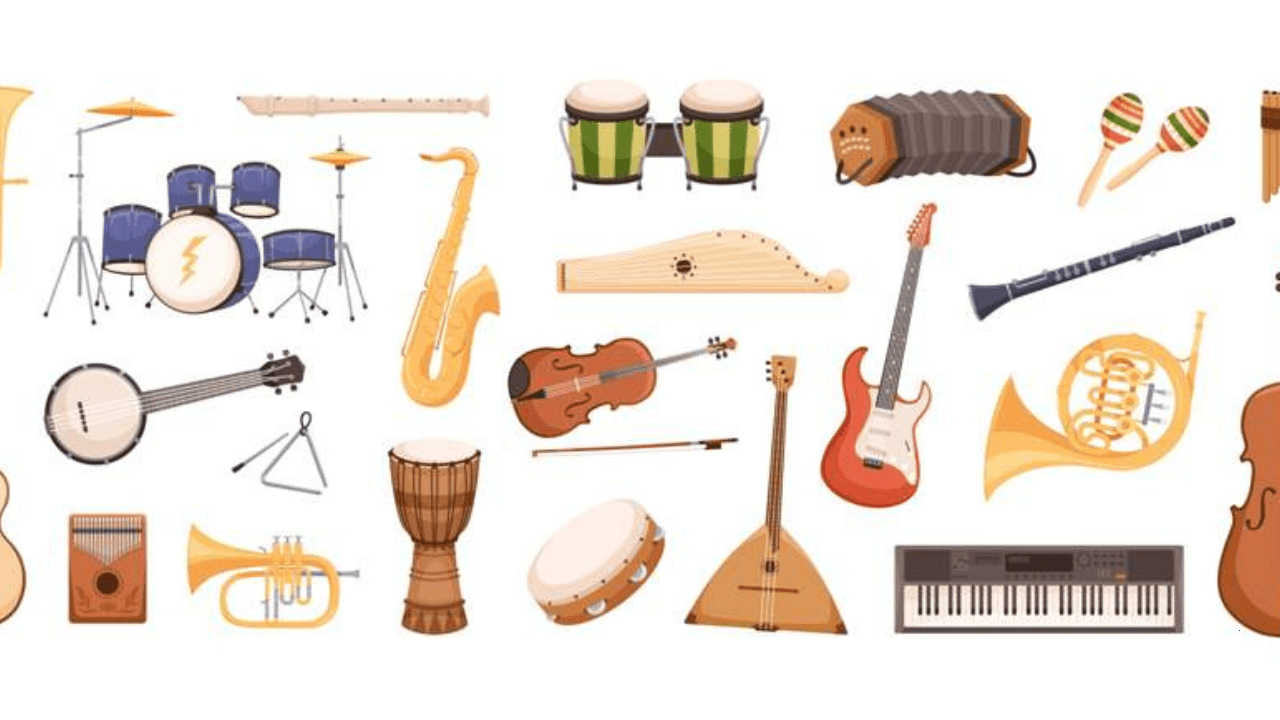A musical instrument is any device that produces sound and is used to create music. From simple percussion instruments like drums to advanced electronic synthesizers, musical instruments come in various shapes, sizes, and complexities. Humans have been crafting and playing musical instruments for thousands of years, reflecting cultural diversity and artistic expression.
Musical instruments can be classified into broad categories based on how they produce sound. Each type has its own unique characteristics, allowing musicians to explore endless possibilities of rhythm, melody, and harmony.
A Brief History of Musical Instruments
The origins of musical instruments date back to prehistoric times. Early humans likely discovered the musical potential of natural objects, such as blowing through hollow bones or striking stones together. Over time, these primitive tools evolved into sophisticated instruments with intricate designs.
- Prehistoric Instruments: Flutes made from bird bones are among the earliest known musical instruments, dating back around 40,000 years.
- Ancient Civilizations: Harps, lyres, and drums were prominent in ancient Egypt and Mesopotamia, reflecting their role in ceremonies and entertainment.
- Medieval Period: Instruments like the lute and pipe organ gained popularity, influencing Western classical music.
Today, musical instruments range from acoustic to digital, catering to modern musical needs.
Types of Musical Instruments
Musical instruments are typically categorized into five main groups:
1. String Instruments
String instruments produce sound by vibrating strings. The vibration can be created by plucking, bowing, or striking the strings. Examples include:
- Guitar
- Violin
- Cello
- Harp
2. Wind Instruments
These instruments produce sound when air passes through them. Wind instruments are further divided into woodwinds and brass. Examples include:
- Flute
- Clarinet
- Saxophone
- Trumpet
3. Percussion Instruments
Percussion instruments produce sound when struck, shaken, or scraped. They are essential for rhythm in musical compositions. Examples include:
- Drums
- Tambourine
- Xylophone
- Congas
4. Keyboard Instruments
These instruments have keys that are pressed to produce sound. They offer a broad range of notes and versatility. Examples include:
- Piano
- Organ
- Synthesizer
5. Electronic Instruments
Modern electronic instruments use circuits and technology to generate sound. They are popular in contemporary music genres. Examples include:
- Synthesizers
- Drum machines
- Digital samplers
The Role of Musical Instruments in Music
Musical instruments are the heart of music creation. They allow artists to express emotions, tell stories, and communicate ideas. Whether played solo or as part of an orchestra, instruments shape the way we experience music.
Cultural Significance
Instruments often carry cultural and historical value. For instance, the sitar is deeply rooted in Indian classical music, while the didgeridoo is a symbol of Aboriginal Australian culture.
Therapeutic Value
Music therapy frequently involves instruments to help individuals improve mental and emotional well-being. Playing instruments has been shown to reduce stress and enhance cognitive skills.
How to Choose a Musical Instrument?
Selecting a musical instrument depends on several factors, such as:
- Personal Interest: Choose an instrument that resonates with your passion for music.
- Budget: Some instruments, like grand pianos, can be expensive, while others, like ukuleles, are more affordable.
- Purpose: Determine whether you’re playing for leisure, performance, or professional production.
- Skill Level: Beginners may prefer simpler instruments, such as recorders or acoustic guitars.
Maintenance of Musical Instruments
Proper care is essential to keep instruments in good condition. Here are some tips:
- Clean instruments regularly to prevent dust and corrosion.
- Store them in appropriate cases to avoid damage.
- Tune string and wind instruments periodically for optimal sound quality.
- Avoid exposing instruments to extreme temperatures or humidity.
Famous Musical Instruments Across Genres
Classical Music
- Violin: Known for its rich, expressive tones.
- Piano: A staple in classical compositions.
Rock and Pop
- Electric Guitar: Iconic in rock music.
- Drums: Essential for rhythm.
Jazz
- Saxophone: Key in jazz melodies.
- Double Bass: Provides a deep, resonant foundation.
Folk Music
- Banjo: Common in bluegrass and folk genres.
- Bagpipes: Associated with Scottish tradition.
Future of Musical Instruments
The evolution of technology continues to influence musical instruments. Electronic instruments and digital software allow musicians to experiment with new sounds and styles. Virtual instruments, powered by artificial intelligence, are also gaining popularity, expanding the possibilities for music creation.
Closing Thoughts
Understanding what a musical instrument is opens a gateway to appreciating the art of music. Whether you’re a beginner or a seasoned musician, the variety of instruments available today offers endless opportunities to explore and create. From classical violins to modern synthesizers, each instrument tells a story and contributes to the rich tapestry of music.
Related Articles:
For further reading, explore these related articles:
- Best Instruments for Beginners to Start Your Musical Journey
- Discover Instruments You Play with Fingers
For additional resources on music marketing and distribution, visit Deliver My Tune.






